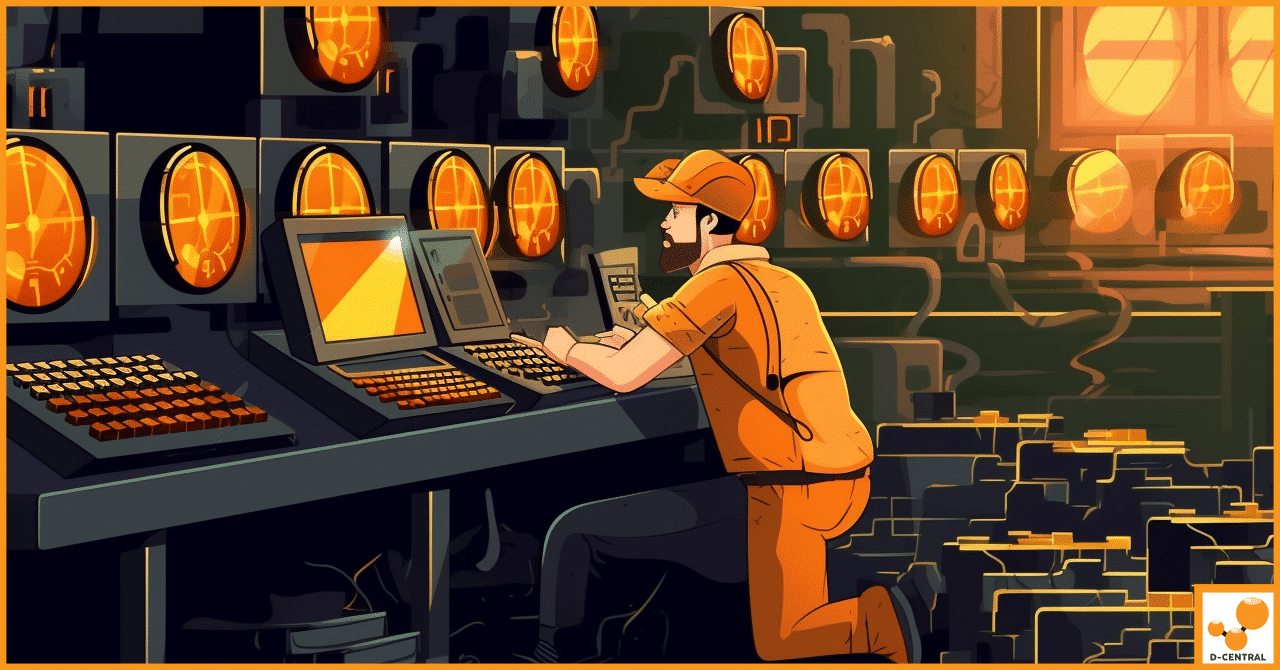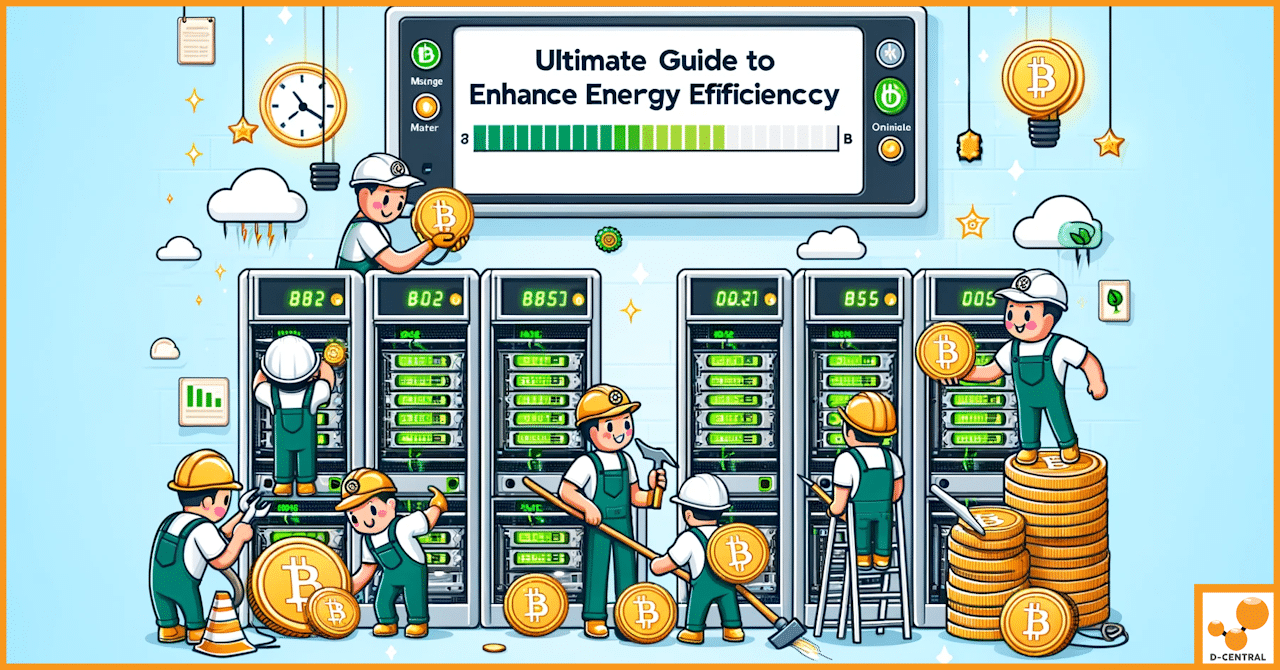
How advancements in lithography have improved Bitcoin mining efficiency
In the cryptocurrency world, mining is an essential process that helps create new coins and verify transactions on the network.
4479 Desserte Nord Autoroute 440, Laval, QC H7P 6E2

Bitcoin mining is a process in which powerful computers, known as miners, work together to solve complex mathematical problems. This process is essential for validating and adding new transactions to the blockchain, which is the decentralized ledger that underpins Bitcoin and other cryptocurrencies. The primary goal of Bitcoin mining is to generate new coins through the process of solving these complex problems, which is what makes it such an attractive and potentially lucrative endeavor.
An ASIC miner BTC is a specialized piece of hardware designed specifically for cryptocurrency mining. These miners are optimized for performing the complex calculations required for Bitcoin mining, making them much more efficient than general-purpose computers or GPUs (graphics processing units). With the right hardware, mining can be a profitable venture, but it’s essential to understand the various factors that impact mining profitability and choose the right equipment for your needs.
In this comprehensive guide, we’ll explore the ins and outs of Bitcoin mining and provide you with the information you need to maximize your profits with ASIC miner BTC. We’ll cover everything from understanding cryptocurrency mining and its impact on profits to choosing the right mining rig for your needs, setting up a successful mining operation, and keeping up-to-date with the latest mining technology and trends.
Cryptocurrency mining is an essential process that ensures the integrity and security of digital currencies like Bitcoin. Miners use their hardware to perform complex calculations that validate and add new transactions to the blockchain. In return for their efforts, miners are rewarded with newly minted coins and transaction fees. This reward system provides a financial incentive for miners to participate in the network, which in turn helps to maintain its security and stability.
However, mining profitability is not guaranteed, and it can be influenced by a variety of factors, including the cost of hardware, electricity, and the current market price of the cryptocurrency being mined. Additionally, mining difficulty – a measure of how challenging it is to find a new block – can also impact profits, as it adjusts over time to ensure a consistent rate of new coins being created.
To maximize profits with an ASIC miner BTC, it’s crucial to understand these factors and how they can affect your mining operation. This means staying informed about market trends, mining difficulty adjustments, and the latest developments in mining hardware and software.
Mining hardware plays a critical role in determining the profitability of your mining operation. High-quality, efficient hardware can significantly increase your chances of finding a new block and earning the associated rewards. On the other hand, outdated or inefficient hardware can lead to increased electricity costs and reduced profits.
ASIC miners, such as ASIC miner BTC, are specifically designed for cryptocurrency mining and offer several advantages over general-purpose computers or GPUs. These specialized devices are optimized for the complex calculations required for mining, resulting in much higher mining performance and efficiency than alternative hardware options.
When it comes to maximizing profits, investing in the right mining hardware is crucial. It’s essential to carefully consider the key features of an efficient ASIC miner, such as its mining performance, power consumption, and overall cost, before making a purchase.
There are several key features to look for when choosing an efficient ASIC miner BTC. Some of the most important factors to consider include:
By carefully considering these key features, you can choose an efficient ASIC miner that will help you maximize your profits in the competitive world of Bitcoin mining.
Several factors can impact the profitability of your Bitcoin mining operation, including:
By understanding the factors that can impact mining profitability, you can make informed decisions about your mining operation and maximize your chances of success.
To determine the performance and efficiency of your ASIC miner BTC, it’s essential to consider the following metrics:
By carefully analyzing these metrics, you can choose an ASIC miner BTC that offers the best combination of performance and efficiency for your specific needs.
Selecting the right mining rig is crucial to the success of your Bitcoin mining operation. There are several factors to consider when choosing an ASIC miner BTC, including:
By carefully considering these factors, you can choose the right mining rig for your needs and maximize your chances of success in the competitive world of Bitcoin mining.
Setting up a successful mining operation with your ASIC miner BTC involves several steps, including:
By following these steps, you can set up a successful mining operation with your ASIC miner BTC and maximize your chances of earning a profit in the competitive world of Bitcoin mining.
When it comes to mining Bitcoin with your ASIC miner BTC, you have two main options: joining a mining pool or mining solo. Each approach has its pros and cons, and it’s essential to carefully consider your specific needs and goals before deciding on a strategy.
When deciding whether to join a mining pool or mine solo, it’s essential to carefully consider your goals and resources. If you have a small amount of hashing power and want to minimize your risk, joining a mining pool may be the best option. However, if you have a significant amount of hashing power and are willing to take on more risk for potentially higher rewards, solo mining may be worth considering.
The world of Bitcoin mining is continually evolving, with new hardware, software, and techniques emerging all the time. To stay competitive and maximize your profits with your ASIC miner BTC, it’s essential to stay informed about the latest mining technology and trends.
Some key resources for staying up-to-date with Bitcoin mining include:
By staying informed about the latest mining technology and trends, you can make informed decisions about your mining operation and maximize your chances of success.
To maximize your profits with your ASIC miner BTC, it’s essential to continually monitor and optimize your mining equipment. This involves several key steps, including:
By regularly monitoring and optimizing your mining equipment, you can maximize your chances of success in the competitive world of Bitcoin mining.
Choosing the right mining software is crucial to the success of your Bitcoin mining operation. There are several popular mining software options available, each with its pros and cons. Some of the top options for ASIC miner BTC include:
By selecting the right mining software for your ASIC miner BTC, you can maximize your mining performance and efficiency and increase your chances of earning a profit.
To succeed in Bitcoin mining, it’s essential to understand the broader crypto economy and market trends. This involves staying informed about key indicators such as block reward halving events, mining difficulty adjustments, and market price fluctuations.
By understanding these trends, you can make informed decisions about your mining operation and adjust your strategy accordingly. For example, if mining difficulty is increasing and rewards are decreasing, you may need to upgrade your hardware or adjust your mining setup to remain competitive.
Assessing your mining return on investment (ROI) is crucial to the success of your Bitcoin mining operation. This involves calculating your total mining costs, including hardware, electricity, and other expenses, and comparing them to your mining rewards.
If your mining operation is not profitable, it’s essential to adjust your strategy. This may involve upgrading your hardware, switching to a more energy-efficient mining pool, or adjusting your mining settings for greater efficiency.
By continually assessing your mining ROI and adjusting your strategy as needed, you can maximize your chances of success in the competitive world of Bitcoin mining.
Maximizing profits with ASIC miner BTC requires a combination of high-quality hardware, smart mining strategies, and a deep understanding of the broader crypto economy and market trends. By carefully considering the factors that impact mining profitability, choosing the right hardware and software, and staying informed about the latest mining technology and trends, you can maximize your chances of earning a profit in the competitive world of Bitcoin mining.
Whether you’re a seasoned miner or just getting started, following these tips and best practices can help you achieve success with your ASIC miner BTC and achieve your mining goals. So why wait? Start mining today and start maximizing your profits with smart mining strategies and high-quality mining hardware.
What is Bitcoin mining?
Bitcoin mining is a process in which powerful computers, called miners, work together to solve complex mathematical problems. This process validates and adds new transactions to the blockchain, the decentralized ledger that underpins Bitcoin and other cryptocurrencies. Miners are rewarded with newly minted coins and transaction fees for their efforts.
What is an ASIC miner BTC?
An ASIC miner BTC is a specialized piece of hardware designed specifically for cryptocurrency mining, particularly Bitcoin. These miners are optimized for performing the complex calculations required for mining, making them more efficient and powerful than general-purpose computers or GPUs.
What factors impact mining profitability?
Mining profitability can be influenced by several factors, including the cost of hardware and electricity, the current market price of the cryptocurrency being mined, mining difficulty, and pool fees (if applicable). It’s important to stay informed about market trends and adjust your strategy accordingly.
What should I consider when choosing an ASIC miner BTC?
When choosing an ASIC miner BTC, consider factors such as mining performance (hash rate), power consumption, cost, ease of use, and reliability. These features will impact the efficiency and profitability of your mining operation.
Should I join a mining pool or mine solo?
The decision to join a mining pool or mine solo depends on your resources and risk tolerance. Joining a mining pool allows you to combine hashing power with other miners, increasing your chances of finding a new block and earning rewards. Solo mining can potentially lead to higher rewards, but it is riskier and less reliable.
How can I maximize my mining profits?
To maximize your mining profits with an ASIC miner BTC, stay informed about market trends, regularly monitor and optimize your mining equipment, choose the right mining software, understand the crypto economy and market trends, and continually assess your mining ROI to adjust your strategy.
DISCLAIMER: D-Central Technologies and its associated content, including this blog, do not serve as financial advisors or official investment advisors. The insights and opinions shared here or by any guests featured in our content are provided purely for informational and educational purposes. Such communications should not be interpreted as financial, investment, legal, tax, or any form of specific advice. We are committed to advancing the knowledge and understanding of Bitcoin and its potential impact on society. However, we urge our community to proceed with caution and informed judgment in all related endeavors.
Related Posts

In the cryptocurrency world, mining is an essential process that helps create new coins and verify transactions on the network.

In the rapidly evolving world of cryptocurrency mining, Application-Specific Integrated Circuit (ASIC) technology has emerged as a cornerstone, revolutionizing the

In the rapidly evolving landscape of cryptocurrency mining, Application-Specific Integrated Circuit (ASIC) miners have emerged as the cornerstone of high-efficiency